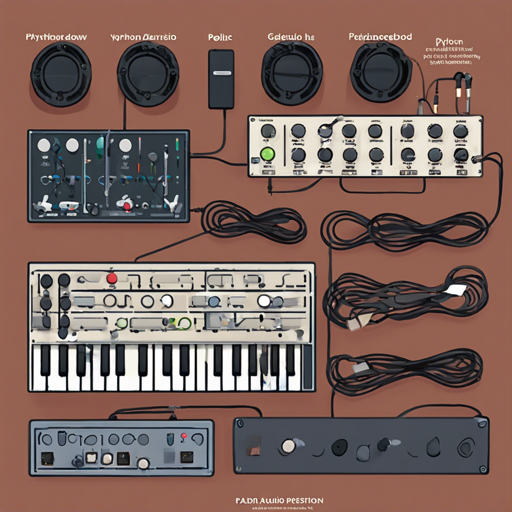If you’re stepping into the world of audio processing with Python, then Pedalboard is your trusty companion. Developed by Spotify’s Audio Intelligence Lab, this library allows you to manipulate audio with ease, enabling you to add effects, edit signals, and much more. In this article, we’ll guide you through setting up Pedalboard, using it for your audio projects, and troubleshooting common problems you’re likely to encounter.
How to Install Pedalboard
Installation of Pedalboard is a breeze! Just follow these steps:
- Open your command line interface (CLI).
- Ensure you have Python 3.8 or later installed.
- Simply run the following command:
pip install pedalboardHow to Use Pedalboard
Using the Pedalboard is like crafting a unique sound recipe. Imagine you’re a chef, and each ingredient is an audio effect that you can combine to create a delightful audio dish. Below are some examples to help you get cooking!
Creating a Simple Audio Pipeline
Let’s create a basic audio pipeline that applies a Chorus effect and Reverb to an audio file.
python
from pedalboard import Pedalboard, Chorus, Reverb
from pedalboard.io import AudioFile
# Make a Pedalboard object with effects
board = Pedalboard([Chorus(), Reverb(room_size=0.25)])
# Open an audio file for reading
with AudioFile('some-file.wav') as f:
with AudioFile('output.wav', 'w', f.samplerate, f.num_channels) as o:
while f.tell() < f.frames:
chunk = f.read(f.samplerate)
effected = board(chunk, f.samplerate, reset=False)
o.write(effected)
In this code, you’re opening an audio file like a book, reading it chunk by chunk, and processing it through your unique sound recipe (the Pedalboard effects).
Adding Effects to Your Audio
To add various effects to your audio, think of it as layering flavors in a dish. Here’s an example of how to create an intricate guitar pedalboard:
python
from pedalboard import *
from pedalboard.io import AudioFile
# Define desired sample rate
samplerate = 44100.0
with AudioFile('guitar-input.wav').resampled_to(samplerate) as f:
audio = f.read(f.frames)
# Create a complex guitar pedalboard
board = Pedalboard([
Compressor(threshold_db=-50, ratio=25),
Gain(gain_db=30),
Chorus(),
LadderFilter(mode=LadderFilter.Mode.HPF12, cutoff_hz=900),
Phaser(),
Convolution('.guitar_amp.wav', 1.0),
Reverb(room_size=0.25),
])
effected = board(audio, samplerate)
with AudioFile('processed-output.wav', 'w', samplerate, effected.shape[0]) as f:
f.write(effected)
Here, you’re layering effects for a richer audio texture, much like adding various spices to enhance flavors.
Troubleshooting Common Issues
If you encounter issues while using Pedalboard, don't fret! Here are some troubleshooting tips:
- Installation Problems: Ensure Python and pip are correctly installed. Reinstall them if necessary.
- Compatibility Issues: Verify that your Python version is compatible (3.8 to 3.13). You can check your version with the command
python --version. - Missing Audio Effects: Check that the proper plugins (VST3 or Audio Unit) are installed if you’re using them.
- Output Errors: Make sure your output directory is valid and writable. Also, ensure that the output file format is supported.
For more insights, updates, or to collaborate on AI development projects, stay connected with fxis.ai.
Conclusion
At fxis.ai, we believe that such advancements are crucial for the future of AI, as they enable more comprehensive and effective solutions. Our team is continually exploring new methodologies to push the envelope in artificial intelligence, ensuring that our clients benefit from the latest technological innovations.
Now, equipped with Pedalboard, you can flex your audio processing skills just like a culinary master in the kitchen. Happy audio crafting!

